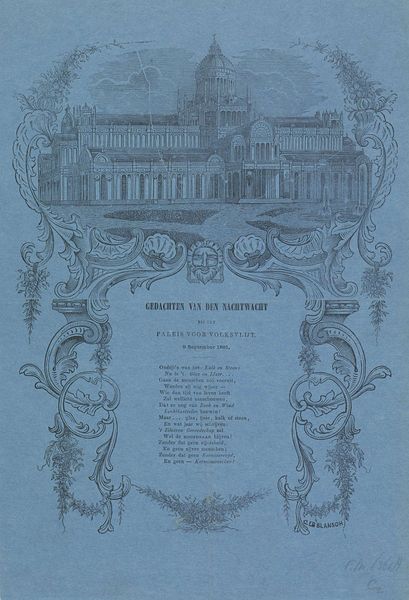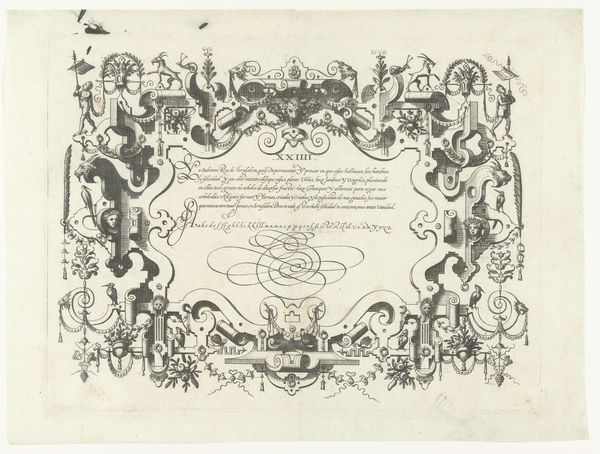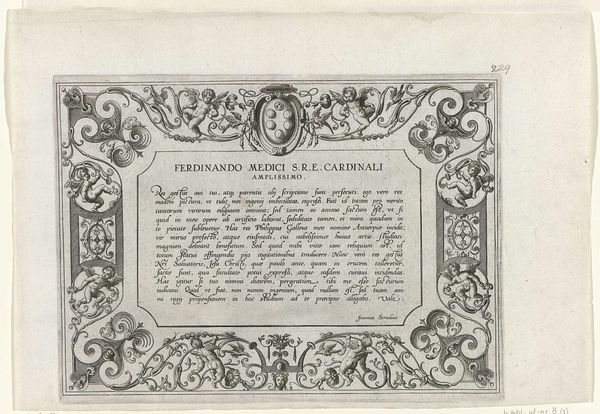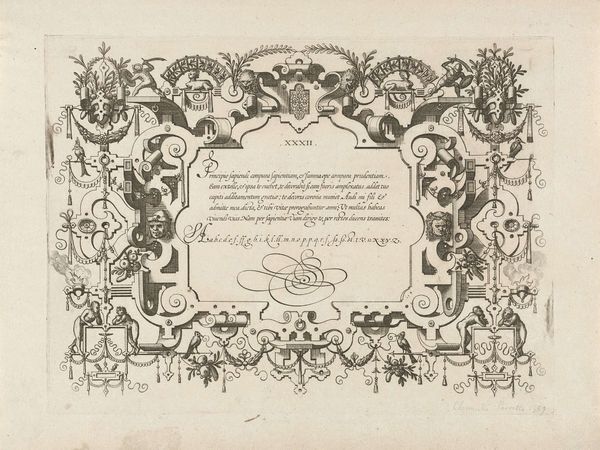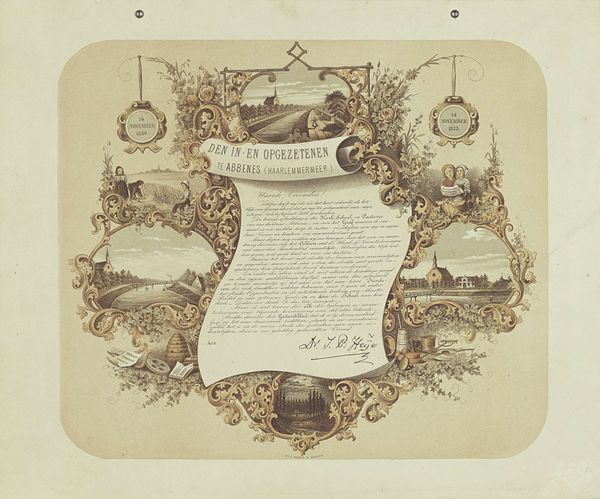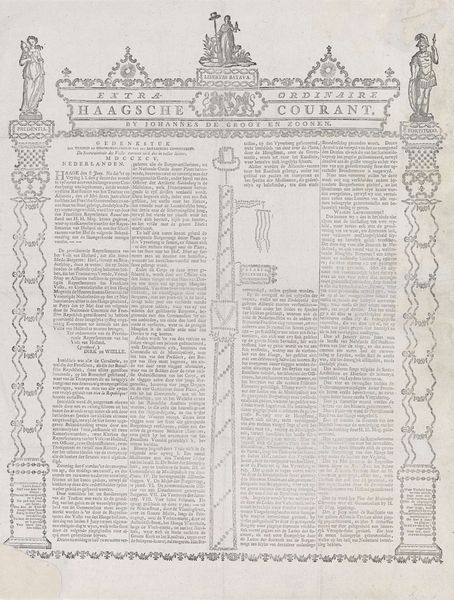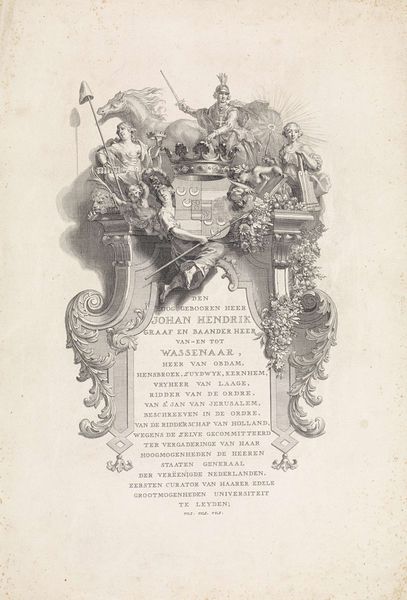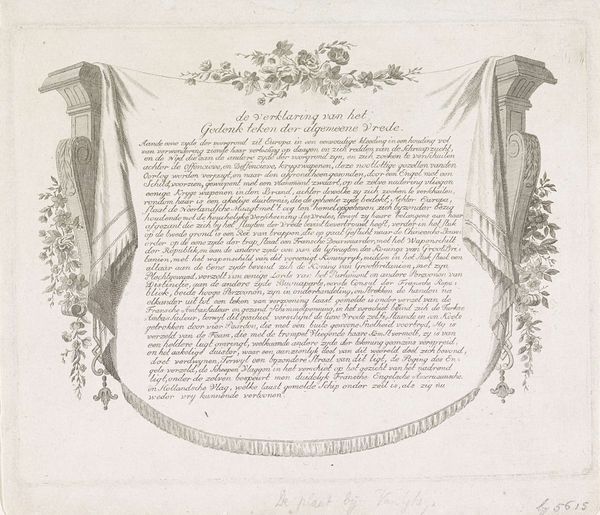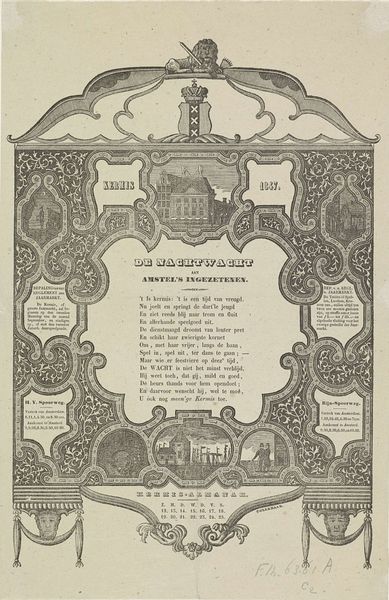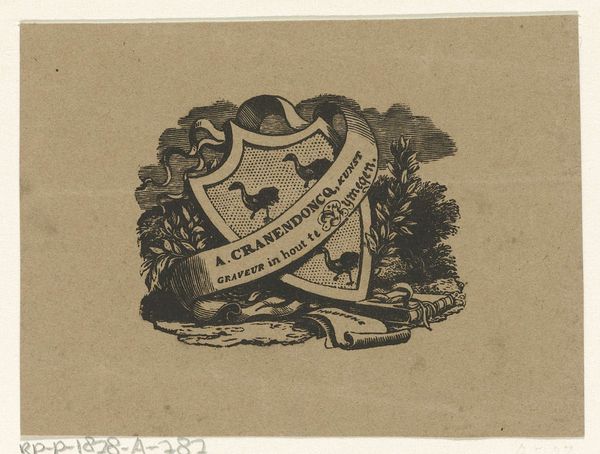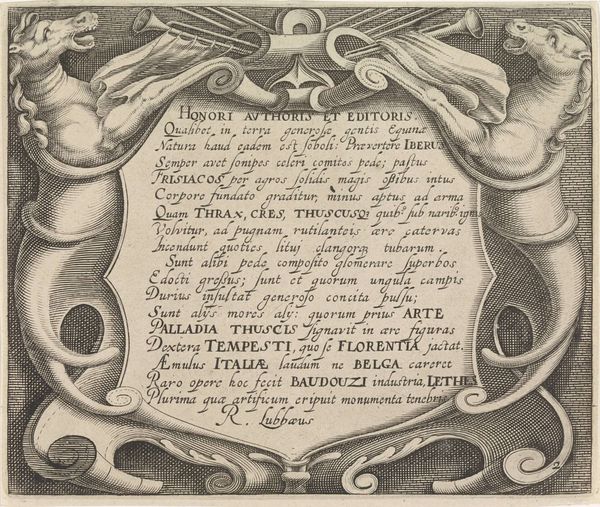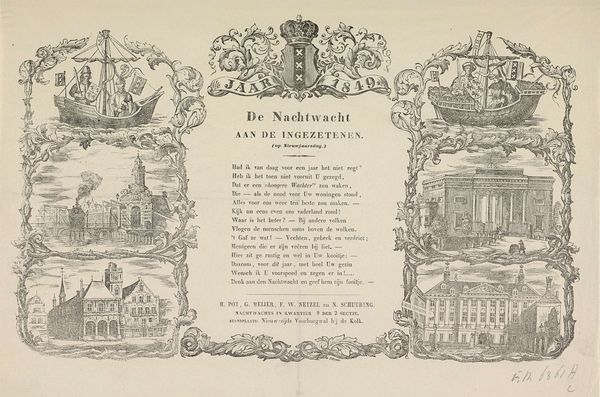
Nieuwjaarswens van de Amsterdamse nachtwacht voor het jaar 1861 1860 - 1861
0:00
0:00
drawing, graphic-art, print, paper, ink, engraving
#
drawing
#
graphic-art
# print
#
paper
#
ink
#
cityscape
#
engraving
Dimensions: height 215 mm, width 310 mm
Copyright: Rijks Museum: Open Domain
Curator: This print is titled "Nieuwjaarswens van de Amsterdamse nachtwacht voor het jaar 1861," or "New Year's Greeting from the Amsterdam Night Watch for the Year 1861." It was created around that time, 1860-1861, by Friedrich Robert Prinz using engraving on paper with ink. Editor: It has a rather ornate, decorative feel, like something made for a special occasion. The blue paper gives it a cool, almost formal tone, but there's also a certain delicate beauty in the details of the buildings and scrollwork. Curator: The cityscape views flanking either side are central, but consider that this print embodies labor and community in the Amsterdam night watch of the time. The materials, from the paper and ink to the engraving process, reflect 19th-century modes of production and distribution of such a personalized greeting card. Editor: Absolutely. Notice the positioning of the architectural depictions. Churches perhaps, meant to represent the divine blessing on the city. Consider the intent, that a gift might carry an inherent benediction upon the recipients in the new year. It visually presents an atmosphere of safety and guardianship, doesn't it? Curator: To a point. The architectural prints also speak to class, because Prinz is replicating a luxury practice through a process accessible for wide distribution, which in itself makes the work available across class lines within the specific cultural moment. That engraving on paper wasn’t nearly as rare or valued as a singular painting done for the church or town counsel. Editor: Yet the artistic hand still guides it; these crafted shapes, this deliberate framing. What story do these buildings whisper? Is it protection, community or religious continuity within the ever changing landscape? They speak to something deep within Amsterdam’s identity at this period. Curator: Right. I think Prinz wanted the citizens of Amsterdam to appreciate the city itself and the labor done every evening for them. How the material means something because people produced it, and how labor produces security. Editor: Fascinating—two sides, two visions—maybe mirroring those buildings across this special, shared, New Years’ moment in time. Curator: Precisely. I appreciate understanding the layers that create value here— the image itself but also labor that enables image production, how they were both exchanged socially.
Comments
No comments
Be the first to comment and join the conversation on the ultimate creative platform.
